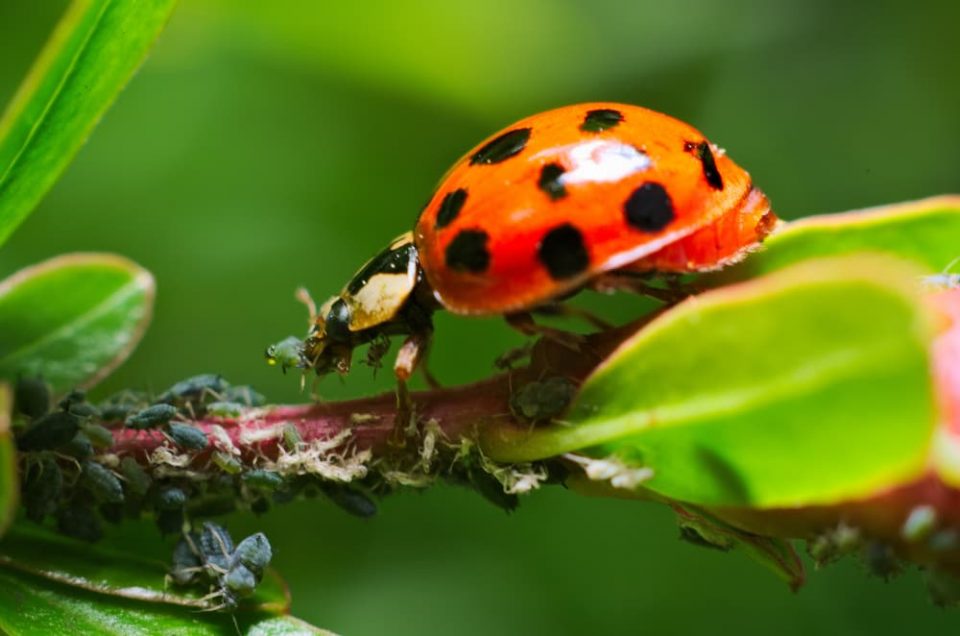What Do Ladybugs Eat?
Ladybugs, also known as ladybirds or coccinellids, are a type of beetle that are often seen as beneficial insects due to their voracious appetite for aphids and other plant-damaging pests. These small, brightly colored beetles are a favorite among gardeners and farmers for their natural pest control abilities. However, their diet is not limited to just aphids, and they can feed on a variety of other insects and even plant materials. In this article, we will explore the diverse diet of ladybugs and the factors that influence their food preferences.
Aphids: The Primary Food Source
Aphids are the primary food source for many species of ladybugs. These small, sap-sucking insects can quickly infest plants and cause significant damage if left unchecked. Ladybugs, with their insatiable appetite for aphids, play a crucial role in maintaining a healthy balance in the ecosystem.A single ladybug can consume up to 5,000 aphids during its lifetime, making them an invaluable ally for gardeners and farmers. The larvae of ladybugs are also effective aphid predators, consuming even more than the adults.
Other Insects and Arthropods
While aphids are the main course for ladybugs, they also feed on a variety of other insects and arthropods. These include:
- Mealybugs: Small, soft-bodied insects that feed on plant sap.
- Scale insects: Tiny, immobile insects that attach themselves to plant stems and leaves.
- Thrips: Slender insects that feed on plant tissues, causing discoloration and distortion.
- Mites: Tiny arachnids that can cause damage to plants if left unchecked.
- Insect eggs and larvae: Ladybugs will also consume the eggs and larvae of other insects, including their own species.
Pollen and Nectar
While ladybugs are primarily carnivorous, they also feed on plant materials such as pollen and nectar. This is especially true for adult ladybugs, who need these plant-based foods to supplement their diet and provide energy for reproduction and overwintering.Some species of ladybugs, such as the two-spotted ladybug (Adalia bipunctata), are known to feed exclusively on pollen and nectar during certain stages of their life cycle.
Honeydew
Honeydew is a sugary substance produced by aphids and other sap-sucking insects as a byproduct of their feeding. Ladybugs are attracted to honeydew and will often feed on it, especially when other food sources are scarce.The honeydew produced by aphids can also attract other insects, such as ants, which may form a mutually beneficial relationship with the aphids. In these cases, ladybugs may have to compete with ants for access to the honeydew.
Cannibalism
In some cases, ladybugs may resort to cannibalism, feeding on their own eggs, larvae, or even other adult ladybugs. This behavior is more common when food sources are scarce or when the population density is high.Cannibalism can also occur during the larval stage, with larger larvae consuming smaller ones. This behavior may be a way for the larger larvae to gain an advantage in terms of size and development.
Factors Influencing Food Preferences
Several factors can influence the food preferences of ladybugs, including:
- Species: Different species of ladybugs may have different dietary preferences and specializations.
- Life stage: Ladybug larvae and adults may feed on different types of prey, with larvae often being more specialized in their diet.
- Availability of food sources: The abundance and availability of prey can greatly influence the diet of ladybugs.
- Environmental conditions: Factors such as temperature, humidity, and the presence of other predators can also affect the feeding behavior of ladybugs.
Ladybug Diet Table
| Food Source | Importance to Diet | Typical Consumption |
|---|---|---|
| Aphids | Primary food source | Up to 5,000 per ladybug lifetime |
| Mealybugs | Secondary food source | Varies by species |
| Scale insects | Secondary food source | Varies by species |
| Thrips | Secondary food source | Varies by species |
| Mites | Secondary food source | Varies by species |
| Insect eggs and larvae | Occasional food source | Varies by species |
| Pollen and nectar | Supplementary food source | Varies by species and life stage |
| Honeydew | Supplementary food source | Varies by availability |
Frequently Asked Questions (FAQ)
Q1: What do ladybugs eat?
A1: Ladybugs primarily feed on aphids, but they also consume other insects such as mealybugs, scale insects, thrips, and mites. They may also feed on pollen, nectar, and honeydew, and in some cases, they may resort to cannibalism.
Q2: How many aphids can a ladybug eat?
A2: A single ladybug can consume up to 5,000 aphids during its lifetime.
Q3: Do ladybugs eat plants?
A3: While ladybugs are primarily carnivorous, they do feed on plant materials such as pollen and nectar to supplement their diet. However, they do not directly consume plant tissues.
Q4: What factors influence a ladybug’s diet?
A4: Several factors can influence a ladybug’s diet, including species, life stage, availability of food sources, and environmental conditions.
Q5: Where can I find more information about ladybugs?
A5: For more detailed information about ladybugs, you can visit the Wikipedia page on ladybugs here.
Conclusion
Ladybugs are fascinating insects with a diverse diet that includes aphids, other insects, and even plant materials. Their voracious appetite for aphids makes them valuable allies for gardeners and farmers, helping to maintain a healthy balance in the ecosystem. By understanding the factors that influence their food preferences, we can better appreciate the role of ladybugs in the natural world and find ways to encourage their presence in our gardens and farms.



